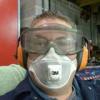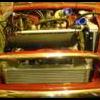A bit broader than the original thread topic but it's really not possible to look in isolation (in the total context of the thread) at just the Rod Cap Fasteners.
Accepted Engine Reconditioning Practice is to Recondition Con Rods when overhauling an Engine. This includes Crack Testing, Little and Big End checks, Signs of heating (particularly in the Little End), Rod Cap Location, Checks and Corrections for Rod Bending and Twist, Thrust Clearances and Wear, Spot Facings, Replacement of the Cap Fasteners and re-sizing of the Big End.
They are so often over looked and a good percentage of Engine problems, can be tracked down to the Rods. I'd never assemble an Engine without doing the above to the Rods.
Replacing the Cap Fasteners means Resizing the Big End. Even if Stock Fasteners are used. This is accepted Engine Reconditioning Practice and it's also a procedure of ARP's;-

Also;-

For completeness;-

Always torque the Cap Fasteners to the Recommended Torque, even for Sizing and Rotational Checks. Any change from that will change the shape and size of the Big End. 99 999 times out of 100 000 you'll be able to re-use the same fasteners if new and of decent quality during the reconditioning of the Rods, to final fitting. This is largely because the Fasteners, while having been Torqued up haven't be subject to the stresses of having been run and loaded up.
You'll find a chart in the ARP Packet under the Grease, however I cannot recommend enough that you down load the ARP Catalogue and read all the tech info in it. Unfortunately, it's scattered throughout the book.
The images show a 998 rod being done on my mill.

Ac
'Interesting' finish from the fly cutter in your Mill 
























